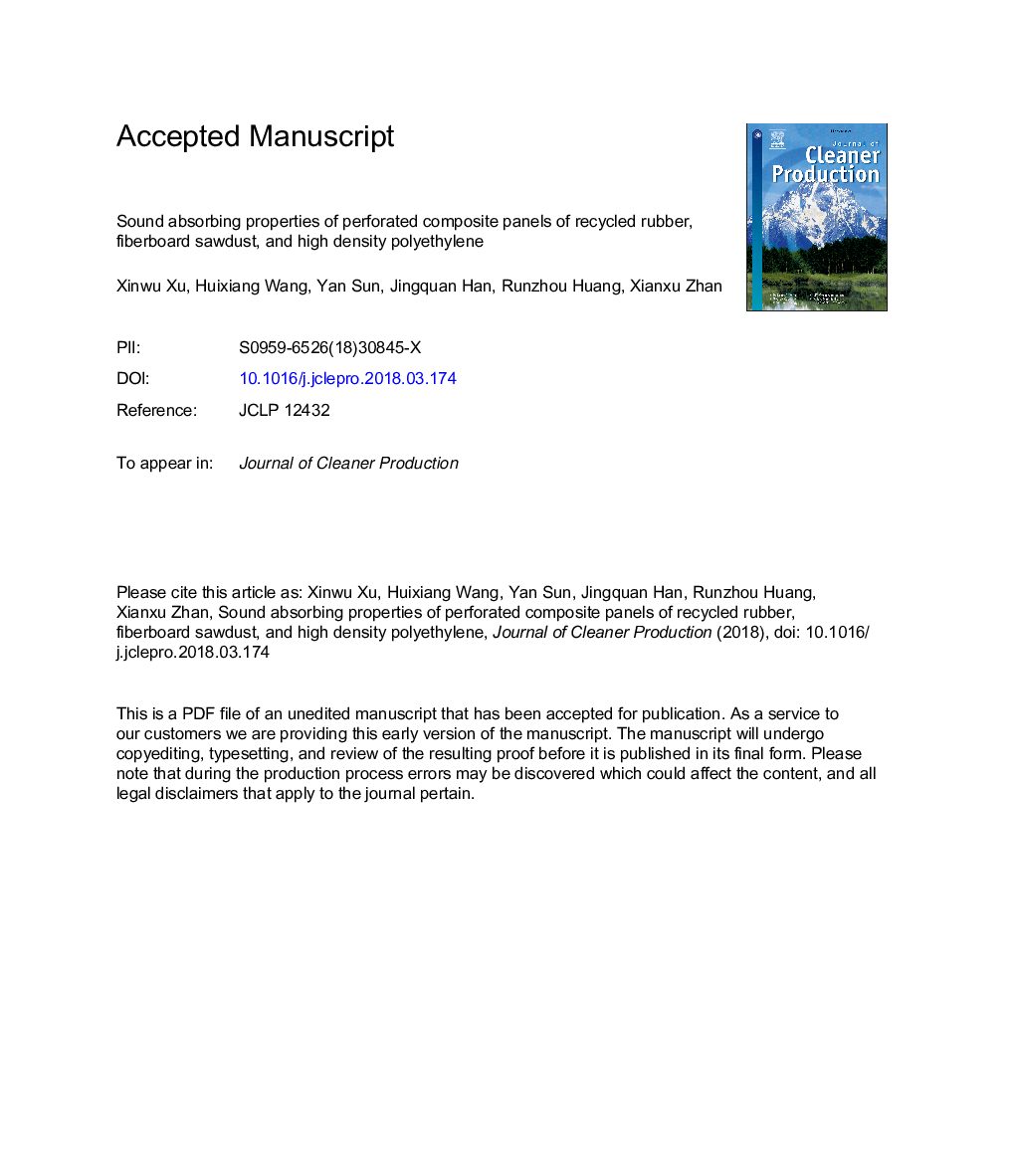| Article ID | Journal | Published Year | Pages | File Type |
|---|---|---|---|---|
| 8095808 | Journal of Cleaner Production | 2018 | 21 Pages |
Abstract
Recycled natural or synthetic polymers, typically waste rubber, may find their novel usage in the production of acoustic materials for their good impedance properties. To that end, rubber granules from used tires (R), high-density fiberboard flooring sawdusts (W), and fresh HDPE pellets (P) were fully blended at a proven mass ratio of 18, 40, and 42 percent, with 5 percent MA-PE as coupling agent based on W/R/P overall weight. The mixture was mould-pressed into composite panels at 185â¯Â°C for 20â¯min, under a pressure of 1â¯MPa. Small holes of 1â¯mm-6â¯mm in diameter were subsequently drilled at three perforation rates (3%, 6%, and 9%). Sound absorption testing was conducted with an impedance tube following ISO 10534-2 standard at incident sound frequencies from 63â¯Hz to 6300â¯Hz. To imitate a Helmholtz resonating structure, distance (D) between the perforated sample and the adjuster was set as 50â¯mm, 100â¯mm, and 150â¯mm, creating different cavity volumes. It was found that perforated WRPC panels have both high sound absorption coefficients and broad bandwidth, especially at frequencies lower than 1000â¯Hz. At higher frequencies range, hole size seemingly showed no evident influences while larger perforation rates produced higher sound absorption coefficients (SAC). The SAC-frequency curves showed 2, 4, and 6 peaks as D was 50â¯mm, 100â¯mm, and 150â¯mm, respectively, with half-peak bandwidth decreasing as frequency increases. The above results may supply helpful guidance to design WRPC acoustic materials.
Related Topics
Physical Sciences and Engineering
Energy
Renewable Energy, Sustainability and the Environment
Authors
Xinwu Xu, Huixiang Wang, Yan Sun, Jingquan Han, Runzhou Huang,
